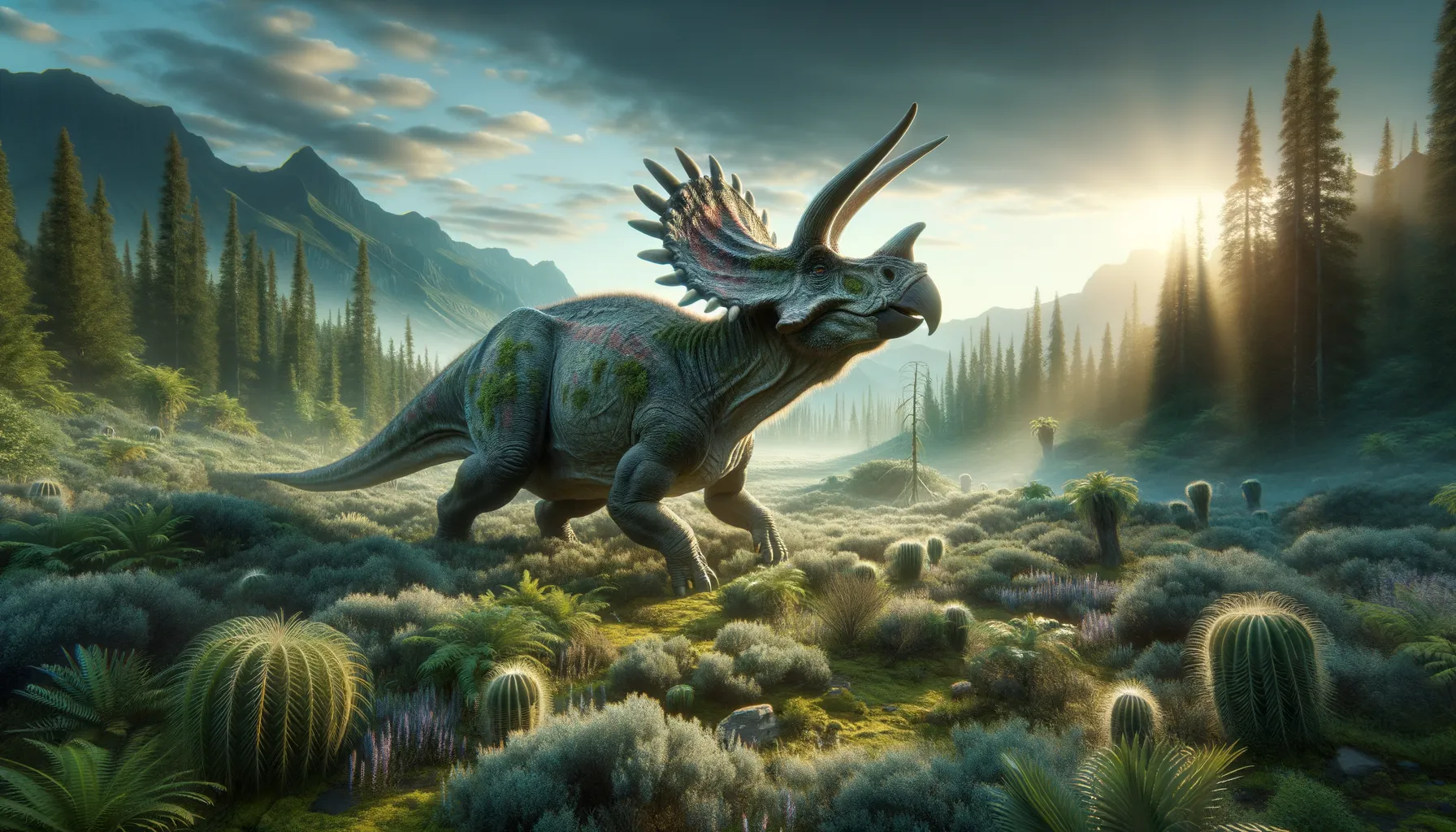
Yehuecauhceratops
A horned wonder of ancient lands.
Period
Cretaceous
Length
Roughly 13 feet long.
Height
Around 6 feet at the shoulders.
Weight
Approximately 1500 pounds.
Yehuecauhceratops was a relatively small ceratopsian dinosaur from the Late Cretaceous period. It roamed what is now Mexico and was notable for its distinct frill and horns, which likely helped it in defense against predators and in social displays. This dinosaur was part of the larger family of horned dinosaurs and was herbivorous, primarily feeding on the lush vegetation of its time. Its fossils give us valuable insights into the diversity of ceratopsians.
Diet
Yehuecauhceratops was a herbivore, eating plants available in its environment. Its beak-like mouth was well-suited for cropping vegetation, likely including ferns and cycads.
Hunting
As a herbivore, it did not engage in hunting. Its primary focus was foraging for plant material, often in groups for safety.
Environmental challenges
Yehuecauhceratops faced predation from larger carnivorous dinosaurs of its time. The changing climate and potential droughts would have impacted the availability of vegetation, posing dietary challenges. Additionally, volcanic activity in its region could have affected its habitat with ash falls or forest fires.
Speed
Moderate, suitable for short distances.
Lifespan
Estimated to be around 10 to 20 years.
First discovery
Discovered in Mexico in 2007.
Fun Facts
- Yehuecauhceratops was a small, horned dinosaur that lived during the Late Cretaceous period, around 72.1 to 66 million years ago.
- The name Yehuecauhceratops means 'ancient horned face,' reflecting its characteristic facial horns.
- This dinosaur was discovered in what is now Mexico, making it part of the very limited group of horned dinosaurs found in that region.
- Yehuecauhceratops was about the size of a dog, significantly smaller than its more famous relative, the Triceratops.
- Despite its smaller size, Yehuecauhceratops had a robust, bulky body, which helped it survive among larger predators.
- It was a plant-eater, meaning it likely fed on ferns, cycads, and other vegetation available at the time.
- The discovery of Yehuecauhceratops helps scientists understand the diversity and evolution of horned dinosaurs in North America.
Growth and Development
From hatching, Yehuecauhceratops underwent significant growth, taking several years to reach full size. Juveniles likely stayed in groups with adults for protection as they matured. Growth rings in bones suggest periods of slower growth, possibly due to seasonal food scarcity.
Habitat
This dinosaur lived in what is now northern Mexico, an area that was likely filled with forests and rivers during the Late Cretaceous. Its environment provided ample vegetation for feeding, with seasonal changes influencing its migratory patterns. Archaeological evidence suggests a rich mix of fauna, indicating a biodiverse ecosystem.
Interaction with other species
Yehuecauhceratops coexisted with various dinosaur species, including small ornithopods and larger carnivorous theropods. It likely engaged in minimal direct competition due to its specialized diet. Herding behavior might have helped protect it from predators, enhancing its social interactions with other ceratopsians.
Natural lifespan
This dinosaur could naturally live up to two decades.
Reproduction
Reproduction likely involved egg-laying, like many other dinosaurs. Nests discovered nearby suggest communal nesting grounds where multiple females may have laid their eggs together. Parental care might have included guarding the nests from predators until hatching.
Social behaviour
Yehuecauhceratops may have lived in small herds, using social structures to ward off predators. Communication between individuals could have involved visual displays with their frills and horns. Such behaviors would have been crucial during mating seasons or when facing threats.
Fossil locations
Fossils of Yehuecauhceratops have primarily been found in northern Mexico, specifically in the Municipio de Ocampo, Coahuila. These discoveries contribute to our understanding of ceratopsian diversity in North America. The region has produced other ceratopsian fossils, indicating a rich prehistoric landscape.
